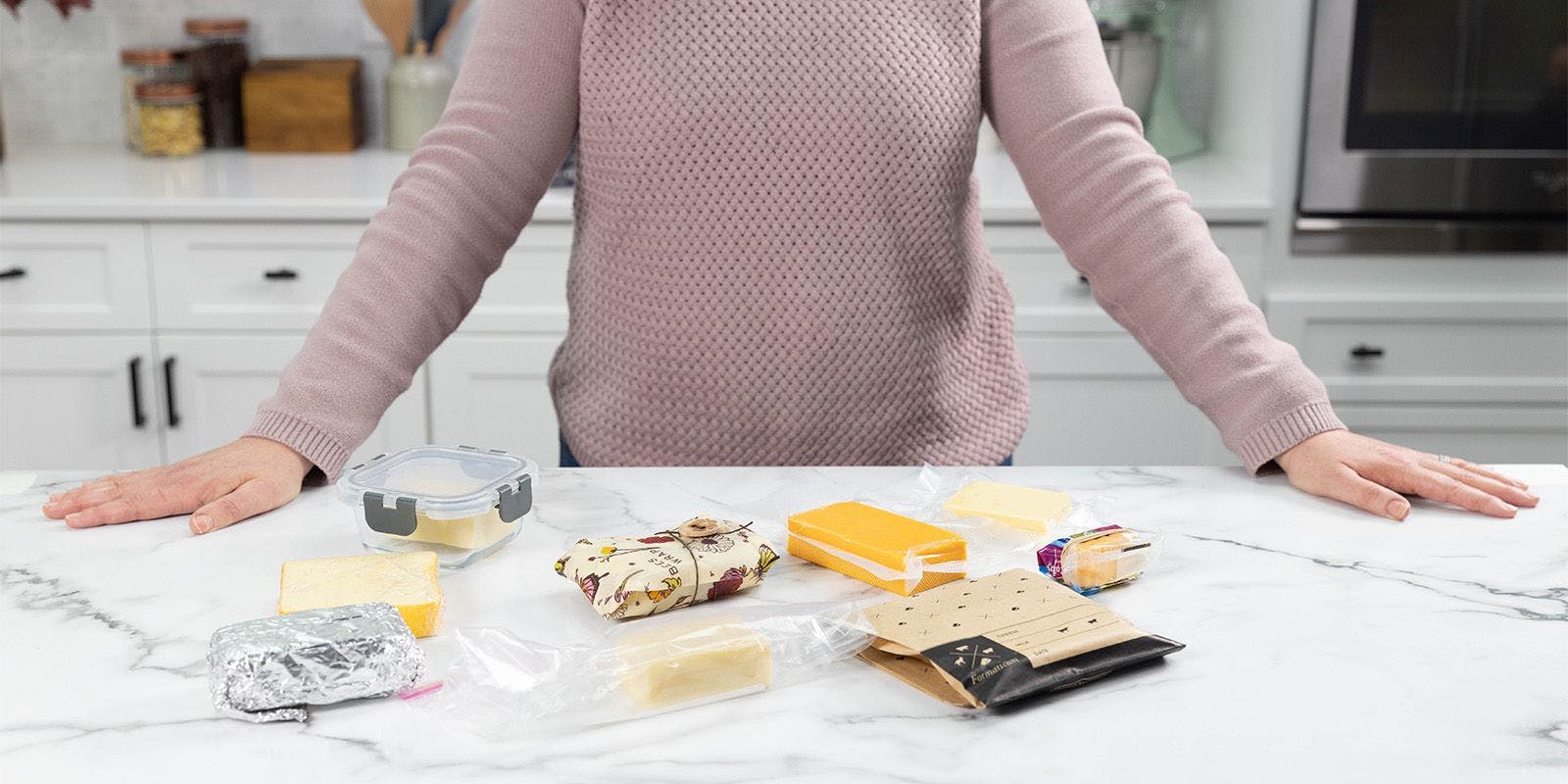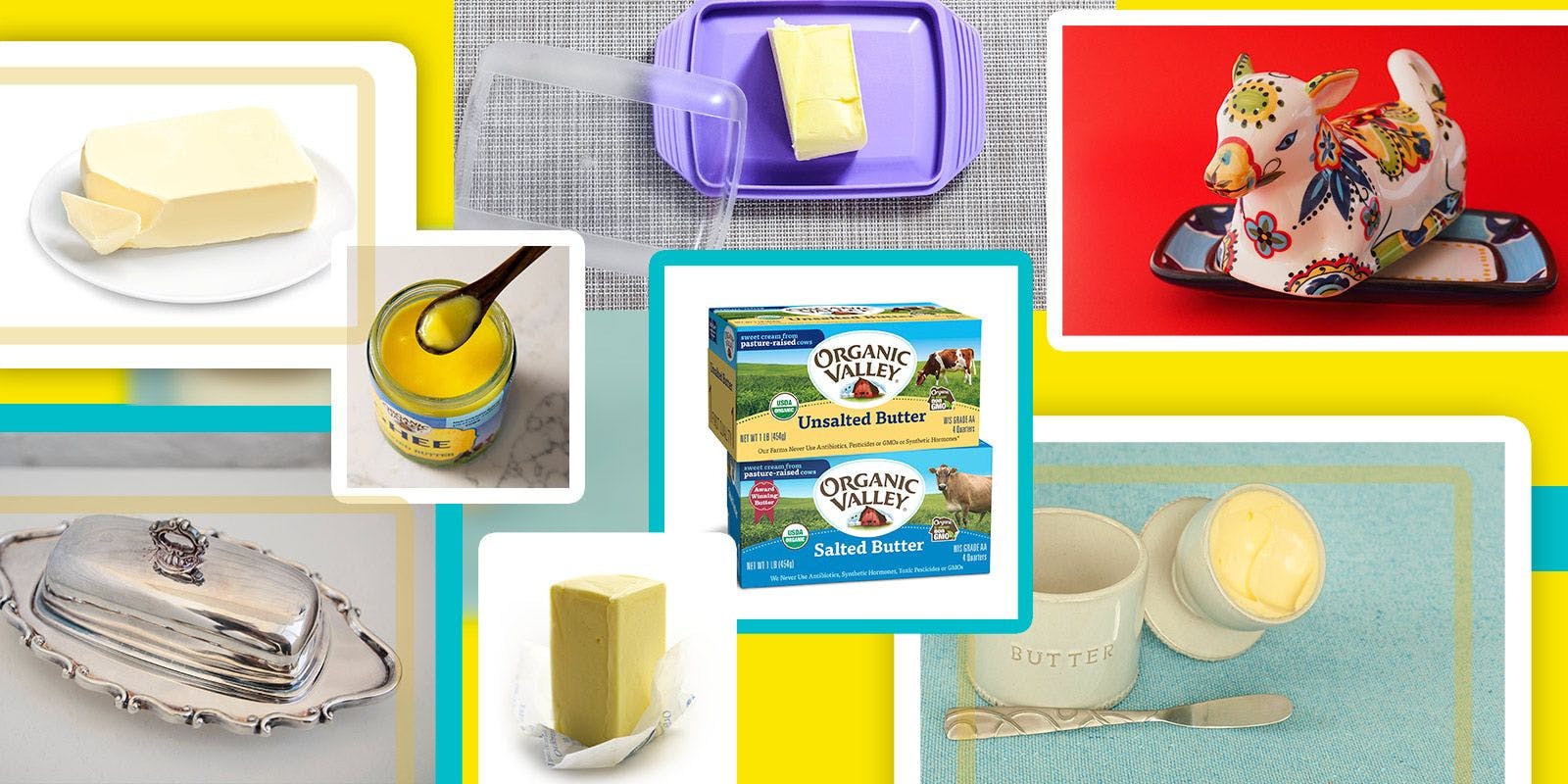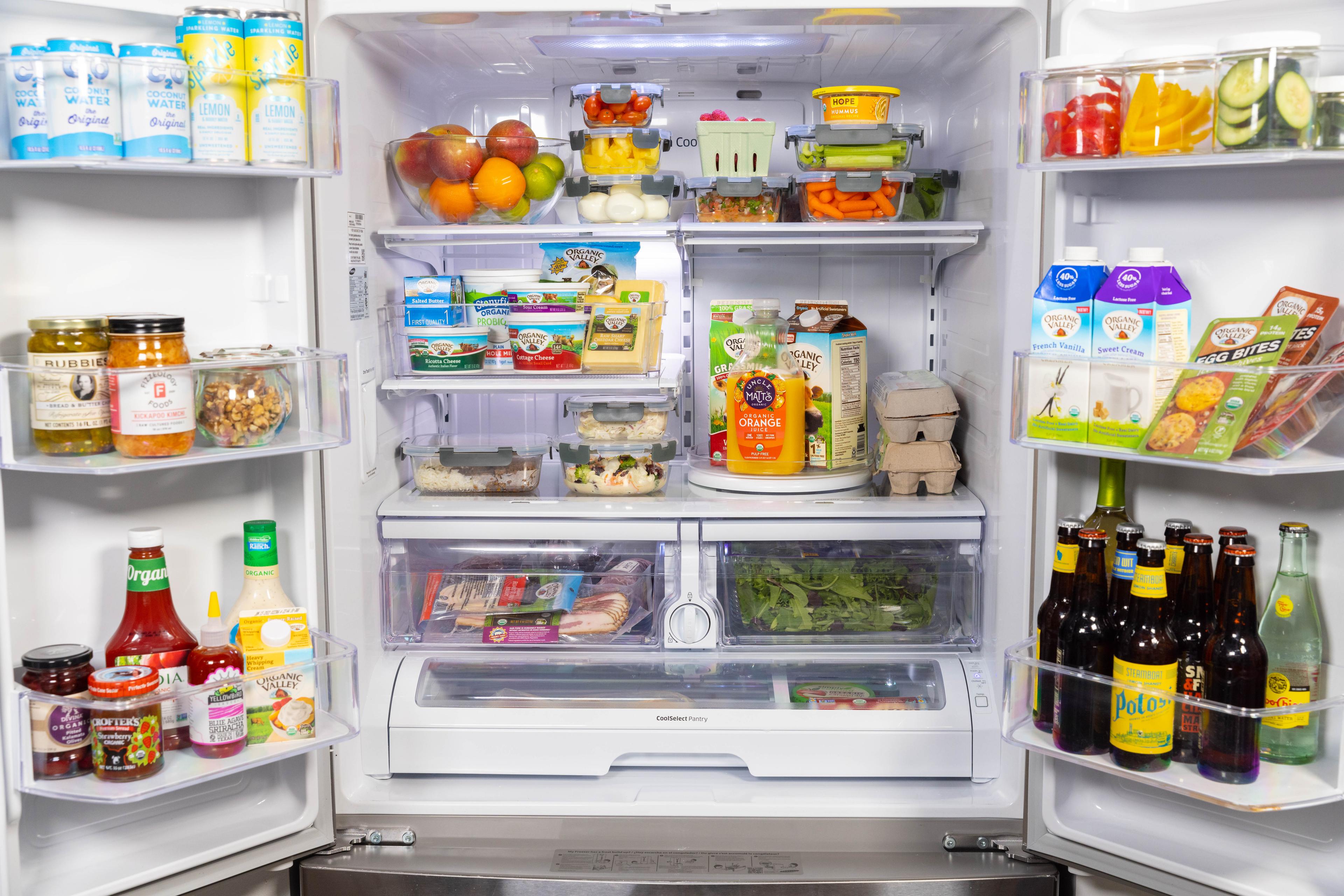
Food
Organize Your Refrigerator for Healthy Eating
Eating healthy doesn’t have to be a daunting task. The Internet makes it seem like you have to be on some diet or take some trendy supplement to be “healthy.” The truth is, eating healthy really starts at home. When you set up your environment to support your health goals, it becomes a lot easier to reach these goals. While there are so many areas of your home that you can set up to help with your overall health, today we are going to focus on everyone’s favorite kitchen appliance, the refrigerator.
Your refrigerator likely gets a lot of use (and a lot of fingerprints). However, we often haphazardly throw food in there only to get annoyed at ourselves for not eating the food we bought during our last grocery trip. Instead of throwing money out the window and watching food go to waste, let’s set you up for success by organizing your refrigerator for healthy eating.
Keep in mind that healthy eating means a little something different to everyone. You do not need to be on a diet or on a slew of supplements to be healthy. Organizing your refrigerator for health is by no means a diet recommendation or any sort of restriction request. Instead we are sharing ways for you to prioritize whole foods like fruits, vegetables, dairy and protein. The goal is to not only incorporate more whole food items but also just reduce food waste and increase cooking and eating from home.
Now that we’re on the same page, let’s get to work and learn how to organize our refrigerator for healthy eating.

Before organizing, it’s a good idea to clean the refrigerator.
1. Schedule Time to Clean Your Refrigerator
I know this may seem obvious, but if it’s not on the calendar it often doesn’t get done. Each week you should set time to do a little maintenance cleaning. By doing this, you can see what you still have, what is still good (vs. what may be stinking up the place), and what you may need. This is also the time to wipe everything down so that last week’s chicken isn’t making everything sticky.
During your clean-out it’s important to make sure that anything that needs to be eaten soon is placed toward the front of the refrigerator. If we can’t see it, we probably won’t eat it. Now is also time to get out your grocery list and meal planner to list out what you will need for the week. By making this a weekly habit it will become easier to know what’s on hand and what you need. It also makes meal planning a whole heck of a lot easier when you have a clean refrigerator.
2. Designate Areas in the Refrigerator
Once your refrigerator is clean it will be much easier to organize. So, if you need to, pull everything out when you clean and start with a fresh and empty refrigerator.
Organizing food by category in the refrigerator will make it much easier when you or a family member are looking for something specific. If you categorize everything you can stop fielding the question of “Where is the milk?” because it will have its own spot in the fridge.
Ideally, you want to have designated areas for categories of food including:
- Fruits.
- Vegetables.
- Dairy products (cheese, yogurt, cottage cheese, etc.).
- Eggs.
- Leftovers.
- Proteins (prepared and unprepared).
- Beverages.
- Condiments.
Certainly, if there are other items that you keep in the refrigerator you can designate a spot for them as well. If you want to go one step further to ensure that everyone knows what goes where, you can get clear plastic bins and label them so that there is no confusion. It will take some upfront work but in the long run it can help keep an organized refrigerator, which can help you see all the healthy items in there.
It’s also a good idea to keep meat or anything that might drip on the lowest shelves.

Keep fruits and vegetables at eye level. Organic Valley Ghee containers are a great storage option for fruits and veggies (notice the peppers and cucumbers on the fridge door shelf).
3. Keep Fruits and Veggies at Eye Level
Many of us store our fruits and vegetables in the crisper bins, which is fine, but if those bins are below eye level or not clear, we will likely forget about what’s in there. Instead of shoving your fruits and vegetables to the back of the refrigerator or in a bin you cannot see, put them front and center at eye level. Sure, sometimes you will not pick them, but if they are more readily available and within your line of sight you will have quicker and easier access to them.
If you have opaque crisper drawers, we recommend storing foods you don’t use as often in them. This is a great location for condiments, snacks and treats that you don’t want or don’t need top of mind. You can then use the shelves on the doors for items you don’t have room for in the main refrigerator area. Yes, even fruits and veggies can go on the doors if they are easier to spot there than in the opaque drawers.
4. Cut and Wash Fruits and Vegetables
When you get home from the grocery store (or the groceries get delivered) or when you are doing some weekly meal prep, you will want to wash and cut fruits and veggies if it makes sense. One of the reasons we often reach for a bag of chips or some cookies is because they are ready to eat. So, we must do the same with the foods we want to eat for our health.
If you want to eat carrots with hummus but the carrots aren’t washed and chopped (or aren’t baby carrots), then it may mean you grab for crackers with the hummus instead. Crackers aren’t necessarily a bad thing, but we get so many more nutrients from carrots so we’d like to find a way to keep them top of mind and ready to eat.
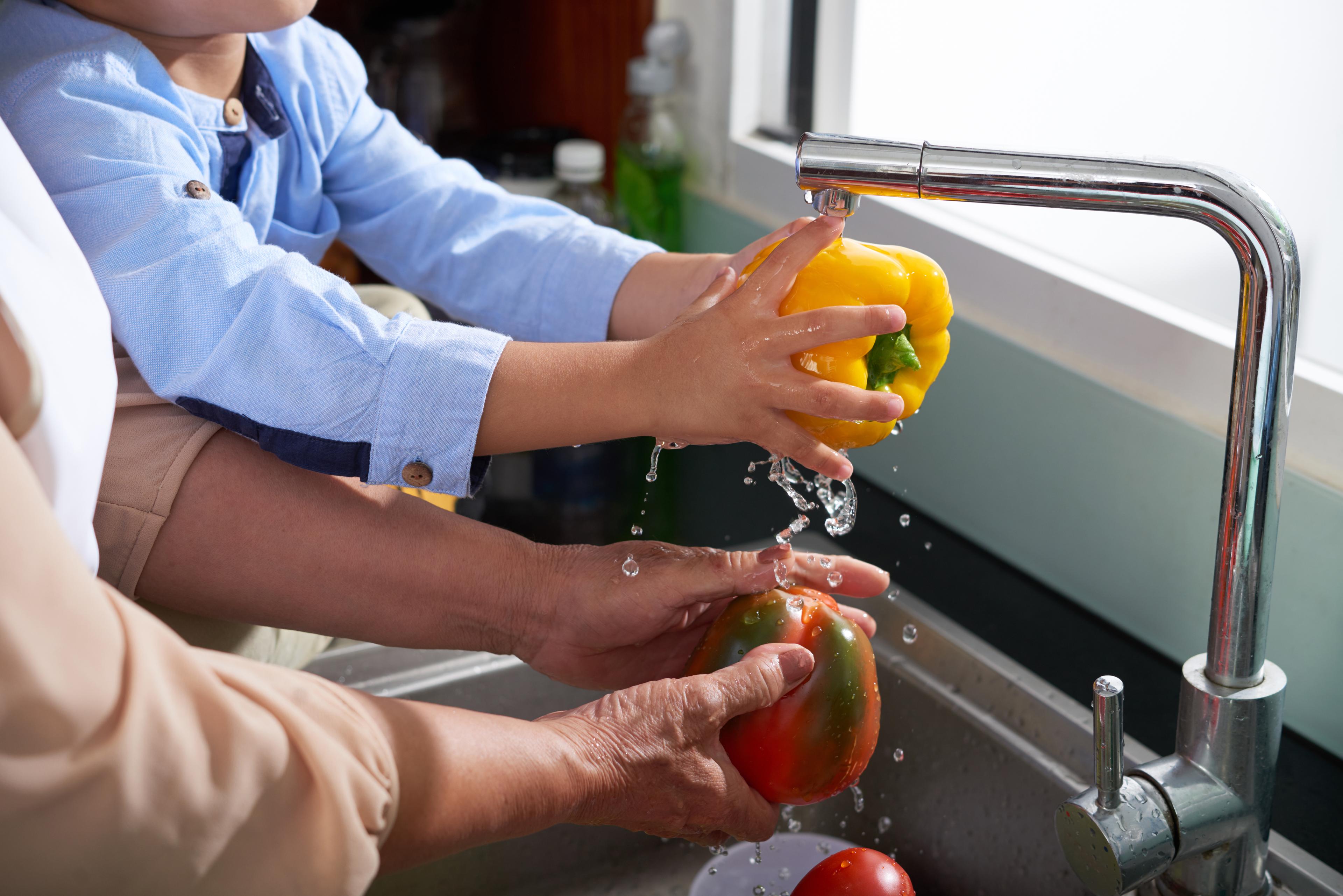
Here are ideas of what to cut and wash:
- Apples: Wash and store at eye level.
- Bell peppers: Wash and slice and store in a glass container.
- Berries. Wash with a water-and-vinegar wash and store in a glass container.
- Carrots: Buy baby carrots or peel and chop carrots and store in a glass container.
- Celery: Chop and place in a glass container.
- Cucumber: Peel (if you prefer) and slice, then place in a glass container.
- Melon: Remove the rind and chop/slice and store in a glass container.
- Lettuce: Wash and dry and place back in their plastic container (or a glass container if it came in a bag) with a paper towel to help absorb excess moisture.
Most fruits and vegetables will store in the refrigerator for up to a week, but make sure to keep them all in your line of sight so that you eat them early and you discard any that show signs of mold.
5. Store Food in Glass Containers
Storing food in glass containers can be helpful so that you can see what you have on hand. Storing in glass containers also means that if it’s a leftover option it can be heated up simply by putting it directly into the microwave. Glass containers are easy to clean and they look sharp in your refrigerator. Remember: The more you can see in your refrigerator, the more likely you are to remember it’s there and eat the food.
Organic Valley Ghee containers are fantastic for storing veggies and fruit (and things that don’t need to be refrigerated!).
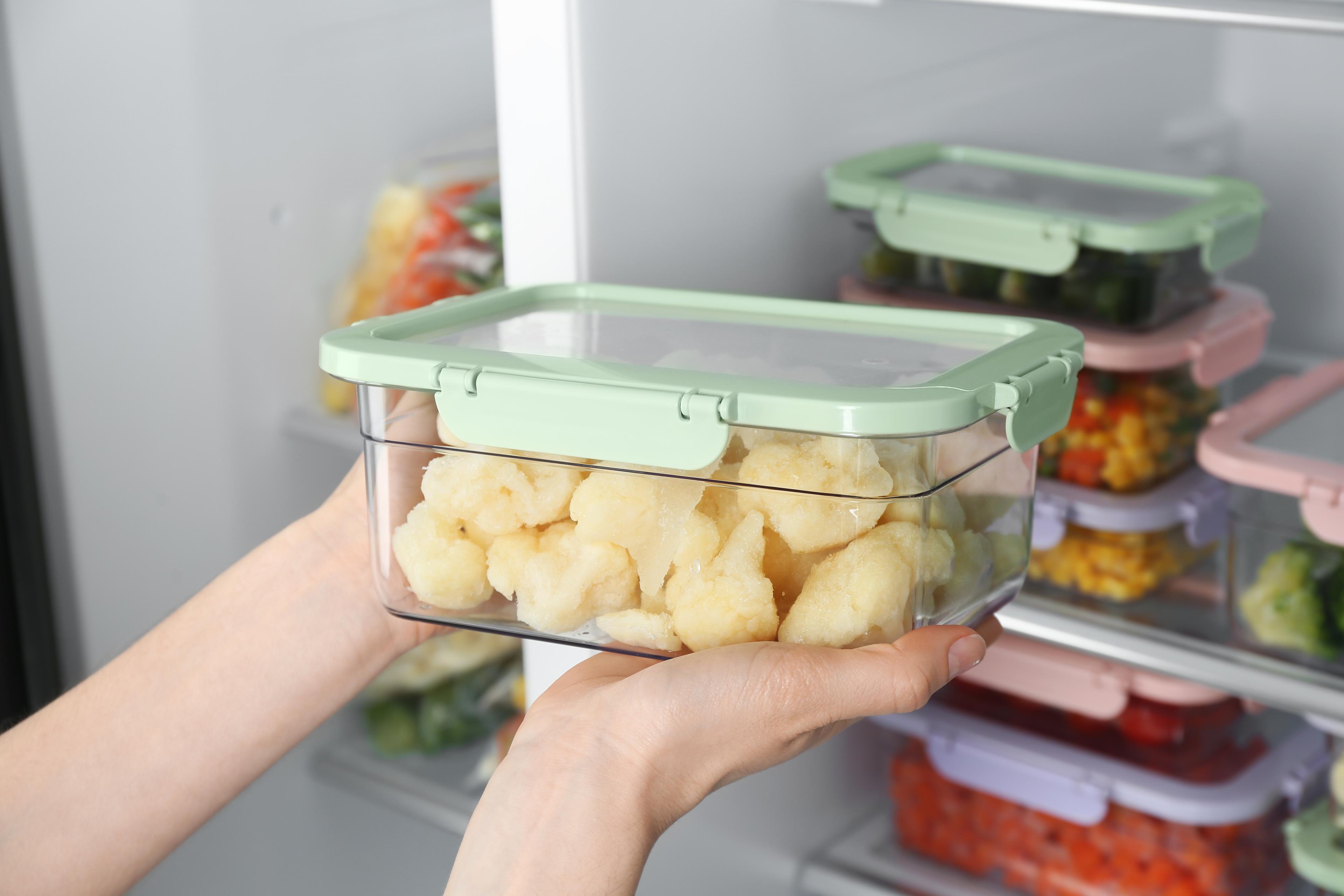
6. Store Food that is Ready to Eat
Much like cutting and washing your fruits and vegetables, we want to make sure we are storing the foods as ready-to-eat as possible. This may mean you need to schedule time in your calendar for meal prep or buying food ready to go. Some ideas of foods to have ready to go include:
- Prepared proteins like cooked ground meat, deli meat slices, rotisserie chicken, etc.
- Hard-boiled eggs.
- Overnight oats.
- Protein bites/energy balls.
- Yogurt or cottage cheese single-serve cups (or purchase a larger container and pour into single-serve containers).
- Cheese sticks, hummus and/or guacamole single-serve cups.
- Leftovers.

Stringles are a great ready-to-eat option.
Now that your refrigerator is locked and loaded, the goal is to keep it that way. Make this process one that is easily rinsed and repeated. Every week you can have a process that includes cleaning the refrigerator out and reloading it with fresh foods. Put it on the calendar and/or designate whose turn it is to do it — that way it gets done. If it’s not on the calendar, it’s not getting done.
As you organize your refrigerator, you may have your own system that works best for you and your family. Don’t let our list stop you; the goal is to help you set up your refrigerator so that it’s easier for you to eat healthy.
Check out the Store Locator to find Organic Valley milk products near you.
We asked our brand ambassadors to share their fridge-storage ideas. Here are some suggestions:
Store strawberries in mason jars to keep them fresh for weeks! This is my favorite tip because it truly works and saves on food waste.
- Sarah Baumeister @seasonandthyme
Keep a marker handy in the kitchen to mark when you open something. When in doubt, throw it out!
- Monica Moreno @eatlikemonica
People eat with their eyes first. So buy foods that are colorful and enticing and exciting to see when opening the fridge. I find buying local and knowing the people and where my food came from encourages me to not waste. It creates a personal aspect beyond the financial investment to honor the food and ingredients I have in the fridge.
- Elise Smith @winniesbakery
Laura Ligos is a registered dietitian who resides in Albany, New York. She takes a food-first approach and focuses on optimizing the health of her clients and followers through her private practice and brand, “The Sassy Dietitian.” She has a Bachelor of Science in Nutrition Sciences from Cornell University and went on to complete her Dietetic Internship and MBA at Dominican University. You can connect with her on Instagram @thesassydietitian or on her website at www.thesassydietitian.com.
Related Articles
- Tags:
- organic nutrition,
- meal prep














